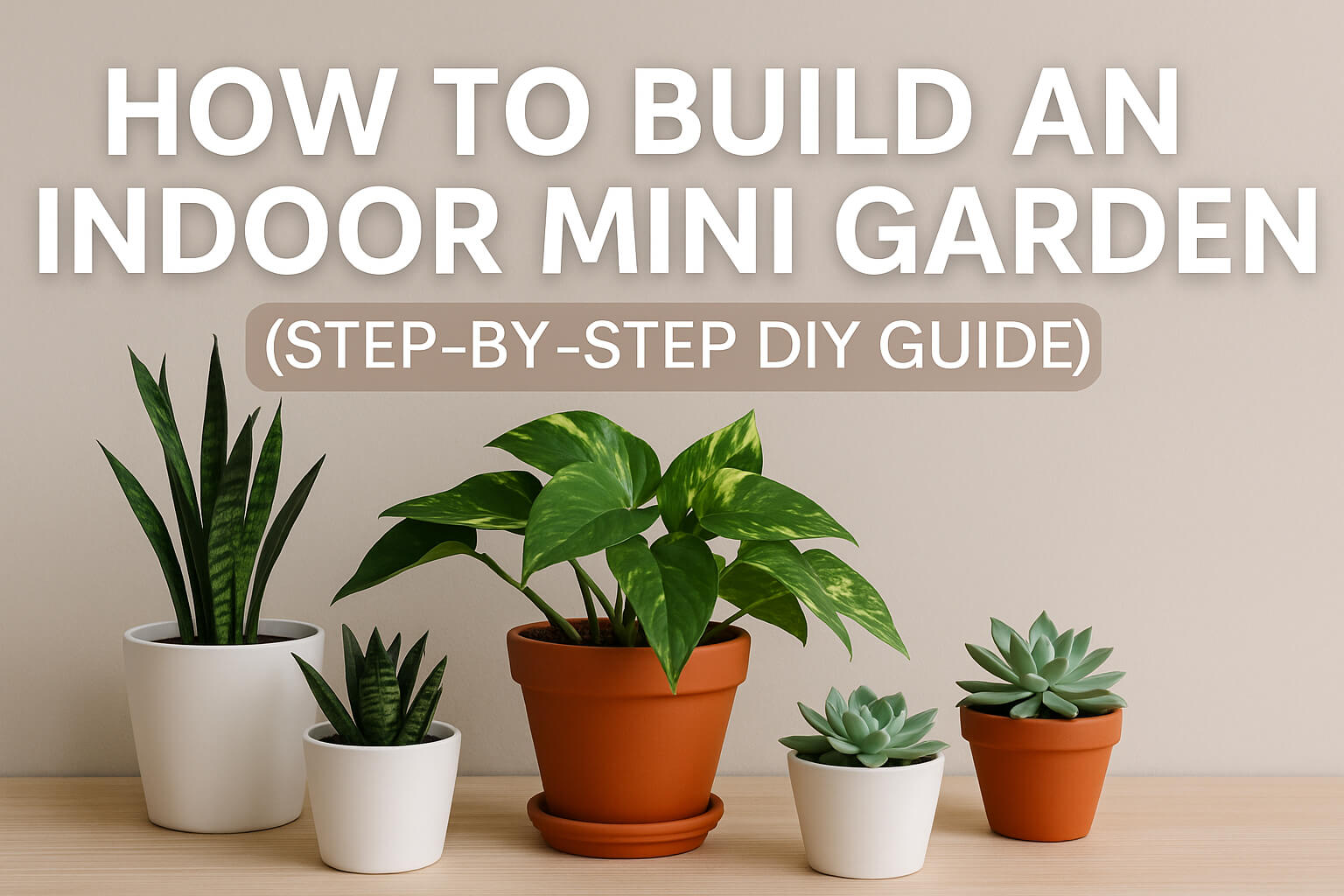How to Build an Indoor Mini Garden at Home – A Beginner-Friendly DIY Guide (2025 Edition)

Looking to bring a little peace and greenery into your space? An indoor mini garden is one of the most satisfying DIY projects you can do — even if you live in a small apartment or have zero gardening experience.
More than just decoration, indoor gardens can improve air quality, reduce stress, and make your home feel more alive. In this guide, we’ll walk you through how to set up your own indoor garden from scratch, using affordable materials and easy-to-follow steps.
This article is written entirely from scratch and offers reliable methods, with reference links for tools and terms to help you explore further — not as sources for duplication.
Step 1: Choose Your Garden Style
Do you want a windowsill herb garden, a succulent shelf, a vertical wall planter, or a desktop zen garden? Choose a setup based on your space, light, and personal style.
For visual ideas and vertical setups, check this Better Homes & Gardens guide for design inspiration (not instructional content).
Step 2: Assess Your Light and Airflow
Different plants need different light levels:
- Bright indirect light: Good for herbs, ferns, snake plants
- Low light: Best for ZZ plants, pothos, philodendrons
- Direct sunlight: Great for succulents, cacti
Use a light meter app to measure your natural light.
If airflow is poor, you can add a small rotating fan to prevent mold and pests.
Step 3: Pick the Right Plants
Start with easy-care plants like:
- Pothos – Fast-growing and forgiving
- Spider Plant – Air purifying and great for beginners
- Succulents – Minimal water needs
- Basil or Mint – Perfect for kitchen use
Avoid plants that need specific humidity or temperature conditions unless you’re ready to commit.
Step 4: Select Containers and Tools
Your pots should have drainage holes. For aesthetics, use trays, baskets, or ceramic planters. You’ll also need:
- Indoor potting soil
- Small trowel
- Watering can or mister
- Pebbles or activated charcoal (for drainage and odor control)
Want a deeper explanation of layering containers? Read this Botanic Vista – How to Layer Soil for Container Gardening (2024) for safe layering and moisture control.
Step 5: Plan Layout and Positioning
Arrange plants based on their light and moisture needs. Group thirsty plants together and drought-resistant ones separately. Use plant risers or shelves to create levels.
Bonus tip: Rotate your plants every week to keep their growth even and avoid leaning.
Step 6: Water, Feed, and Maintain
Stick to this simple care cycle:
- Water when the topsoil is dry
- Wipe leaves with a damp cloth monthly
- Fertilize lightly every 4–6 weeks (optional for low-demand plants)
Consider setting reminders with a plant care app like Planta to track watering schedules and tips.
Step 7: Make It Yours
Add personal touches:
- LED strip lights under the shelf
- Name tags for each plant
- A journal to track their growth or health
- Aromatherapy candles or a mini fountain nearby
Your indoor garden should be a space you enjoy returning to.
Final Thoughts
You don’t need a backyard or a green thumb to build your own garden sanctuary. With a few plants, some basic tools, and a little attention, you can transform a dull corner into a refreshing, natural retreat.
